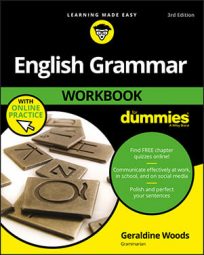Give that umbrella to me, or I’ll break it over your head.
The embroidery on the umbrella was done by me alone.
Luckily, you don’t have to worry when the object of a preposition is a noun. Nouns don’t change no matter where they appear in the sentence. But pronouns do change, depending upon their job in the sentence. And if a pronoun’s job is to be an object of a preposition, it must be an object pronoun.The -self pronouns (myself, himself, ourselves, themselves, and the like) can serve as objects of prepositions, but only if the action in the sentence doubles back, as in “I talk to myself all the time.” In this example sentence, myself is the object of the preposition to.
Practice questions
Take a stab at the following sentences, selecting the correct pronoun from the pair in parentheses.- Once, she stole my dog Spike and asked for a reward when she returned Spike to (I/me/myself).
- “You have to run around (they/them),” I said to (she/her/herself), speaking of Spike and my mother.
Answers to practice questions
- me. The preposition to requires the object pronoun me.
- them, her. Around is a preposition in this sentence, so it takes the object them. The object pronoun her is the object of the preposition to.

